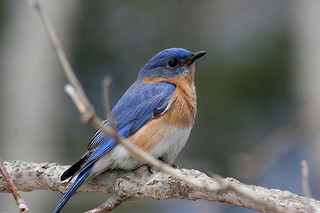View from the Garden: Birds in the Garden Add Song and Beauty

There’s a large tripod with a camera in my living room. It’s almost permanently installed to photograph birds at the feeder outside the window. My husband frequently sneaks up to it very slowly, not wanting to frighten the birds, and “shoots them.” He is an avid birder.
I think birds are one of the best additions to the garden. Their song throughout the day pleases and calms me. I love to watch them at the feeder and in the trees. We note their different feeding habits, the different seasonal “customers,” their changes in color for mating and the behavior of the subsequent fledges.
I wonder how many families have been born and raised at our house? Their presence affords the opportunity to become familiar with local wildlife and if one chooses, can be an avenue to the deeper study of the local environment.
Birds in the garden offer not only interest and pleasure but also eat multitudes of insects in the air and on the ground including mosquitoes and tomato hornworms! Some of them also aid pollination.
One can invite birds into the garden by installing feeders. There are many types. It’s good to avoid any that require the bird to get seeds through a hole as dangerous eye diseases can be passed around this way. We keep the feeders supplied throughout the year. I don’t mind feeding squirrels but they may take advantage and a deterrent might become necessary. A determined and very talented raccoon has given my husband hours of deliberation followed by various constructions to stop it from daily emptying the feeder. That’s one way to learn about the local wildlife!
We have found that black oil sunflower seeds are acceptable to most types of birds. Ground feeding birds eat from the supply fallen from the sloppy birds above. You might want to use shelled seeds as the ones with shells make a “mess” under the feeder. No plants will grow here except sunflowers from fallen seeds.
The more varied the plant material in your yard and garden, the more varied kinds of birds you will attract. They need trees and shrubs for perching, protection in winter and nesting. Flowers provide habitat for insects. It’s good to let flowers go to seed in the fall and leave the plants standing for the winter.
Most importantly, birds are a part of the balance in a healthy garden. When you see birds, toads, frogs, insects, even snakes, in the garden, things are going as they should. To do this, you MUST NOT use chemicals and when the balance is good, you will not need them…well, perhaps some diatomaceous earth for cabbage loopers!
I worked on a property for several years that achieved that balance. It was a formal flower garden with an attached productive vegetable garden.
It was a memorable day when the first toad was spotted. Tadpoles in the lotus pond were a thrill; then the baby fish and frogs. The garter snake hid most of the time. The butterfly bushes were covered with butterflies. The garden was abuzz with bees. Generations of praying mantis lived there and I even saw a walking stick! The bamboo stands were alive with birdsong and filled with nests. Often robins made their nests in places where we could follow the process from eggs to hatchlings close up. A mourning dove made a nest at eye level. An ovenbird nested in a pot of rosemary. Wrens made nests every year in the crevasse of hay bales used when forcing bulbs.
One day we spotted a hummingbird on its nest. The nest was about the size of a fifty-cent piece and made of lichen! That was paradise to me…a magical environment where all things were as they could/should be.
My own garden is much less formal, but just as full of wild life…including the raccoon. Birds are a significant part of the garden. However, the great white egret that ate almost all of the pond fish is not welcome. We have not seen him since we netted the pond. Now we know he is a part of the local environment!
Jeanelle Myers is a professional gardener, landscaper and consultant. For gardening discussion you can call her at 631-434-5067.



